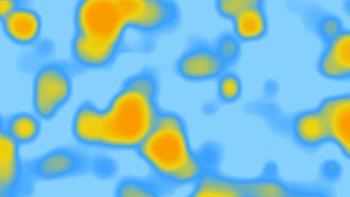
Environment, lifestyle play role in AMD disease development
Research shows how life stressors—such as obesity—reprogram immune system cells and make them destructive to the eye as it ages.
A Canadian study1 published in the journal Science elucidates a new molecular mechanism that may cause age-related macular degeneration (AMD).
The research at Hôpital Maisonneuve-Rosement, in Montreal, shows how life stressors such as obesity reprogram immune system cells and make them destructive to the eye as it ages.
“We wanted to know why some [individuals] with a genetic predisposition develop AMD, while others are spared,” Przemyslaw (Mike) Sapieha, PhD, an ophthalmology professor at the Université de Montréal, said in a statement. “Although considerable effort has been invested in understanding the genes responsible for AMD, variations and mutations in susceptibility genes only increase the risk of developing the disease but do not cause it.”1
Sapieha is director of the Ocular Neurovascular Disease Research Unit at the Maisonneuve-Rosemont Hospital Research Centre associated with CIUSSS de l'Est-de-l'Île-de-Montréal. He also holds the Canada Research Chair in Cell Biology of the Retina and the Chair of the Ophthalmology Research Fund of Université de Montréal, and the Wolfe Professorial Fellowship in Translational Vision Research.
Moreover, Sapieha pointed out that while considerable effort has been invested in understanding the genes responsible for AMD, variations and mutations in susceptibility genes only increase the risk of developing the disease, but do not cause it.
“This observation suggests that we must gain a better understanding of how other factors such as environment and lifestyle contribute to disease development,” he noted.
AMD is a major cause of irreversible blindness worldwide and affected approximately 196 million people in 2020. It comes in two forms:
- dry AMD, characterized by the accumulation of fatty deposits at the back of the eye and the death of nerve cells in the eye,
- and wet AMD, which is characterized by diseased blood vessels that develop in the most sensitive part of the sight-generating tissue, called the macula.
Contact with pathogens
It is already known that the immune system in the eye of a person with AMD becomes dysregulated and aggressive. Normally, immune cells keep the eye healthy, but contact with pathogens such as bacteria and viruses can make them go awry.
At the same time, immune cells are also activated when the body is exposed to stressors such as excess fat in obesity, making being overweight the number one non-genetic risk factor for developing AMD, after smoking.
In their study, Sapieha and Masayuki Hata, MD, PhD, used obesity as a model to accelerate and exaggerate the stressors experienced by the body throughout life.
They found that transient obesity or a history of obesity leads to persistent changes in the DNA architecture within immune cells, making them more susceptible to producing inflammatory molecules.
Hata was a postdoctoral fellow in Sapieha’s laboratory. He is now an associate professor in the Department of Ophthalmology and Visual Sciences at Kyoto University Graduate School of Medicine in Japan.
“Our findings provide important information about the biology of the immune cells that cause AMD and will allow for the development of more tailored treatments in the future,” Hata said in the news release.
The researchers hope their discovery will lead other scientists to broaden their interest beyond obesity-related diseases to other diseases characterized by increased neuroinflammation, including Alzheimer's disease and multiple sclerosis.
Reference
1. Obesity linked to macular degeneration. EurekAlert. News release. January 10, 2023. Accessed January 11, 2023. https://www.eurekalert.org/news-releases/976228
Newsletter
Want more insights like this? Subscribe to Optometry Times and get clinical pearls and practice tips delivered straight to your inbox.









































